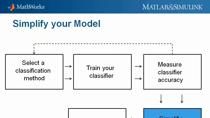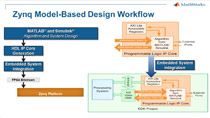Getting Started with Reinforcement Learning
Get started with reinforcement learning and Reinforcement Learning Toolbox™ by walking through an example that trains a quadruped robot to walk. This video covers the basics of reinforcement learning and gives you an idea of what it is like to work with Reinforcement Learning Toolbox. Reinforcement learning is a type of machine learning technique where a computer agent learns to perform a task through repeated trial-and-error interactions with a dynamic environment. Watch this video to learn how Reinforcement Learning Toolbox helps you:
- Create a reinforcement learning environment in Simulink
- Synthesize reward signals for training
- Create neural network policies interactively or programmatically
- Select and design the appropriate reinforcement learning agent
- Train your agent and inspect training results
- Generate C/C++ code for deploying the trained policy
Published: 3 Feb 2022





